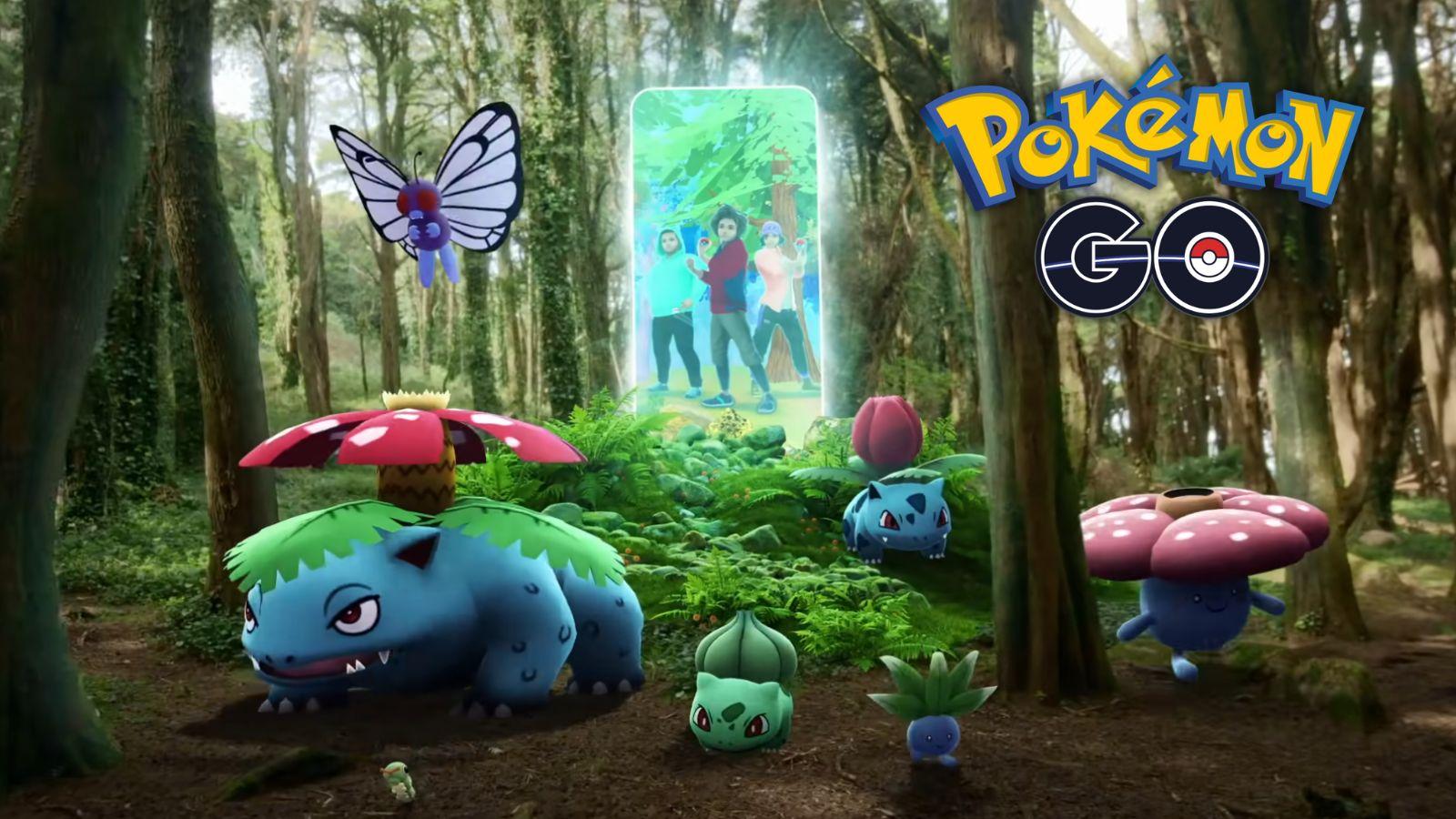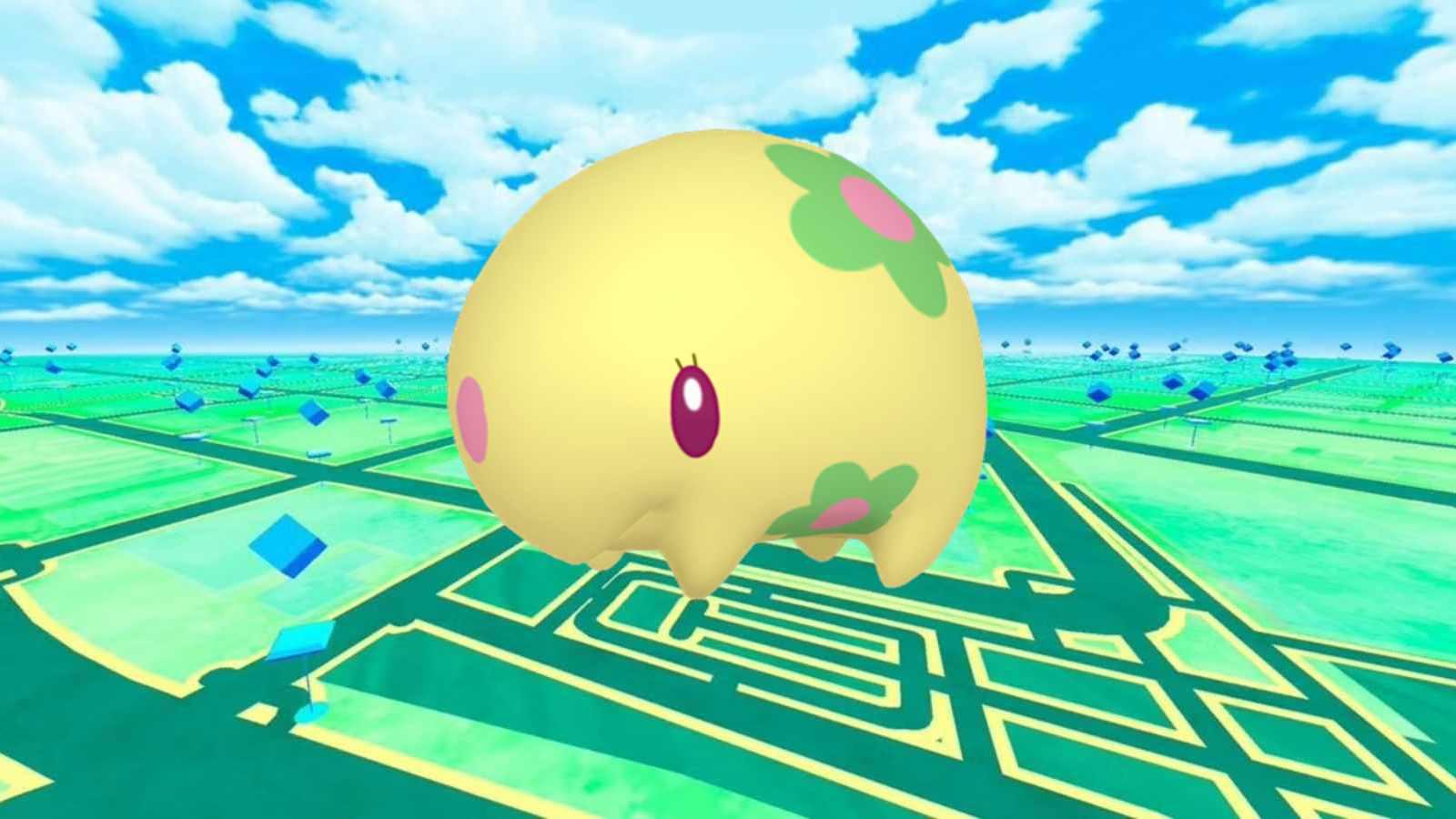Ghostwire Tokyo review – Supernatural shooter is a surprise hit
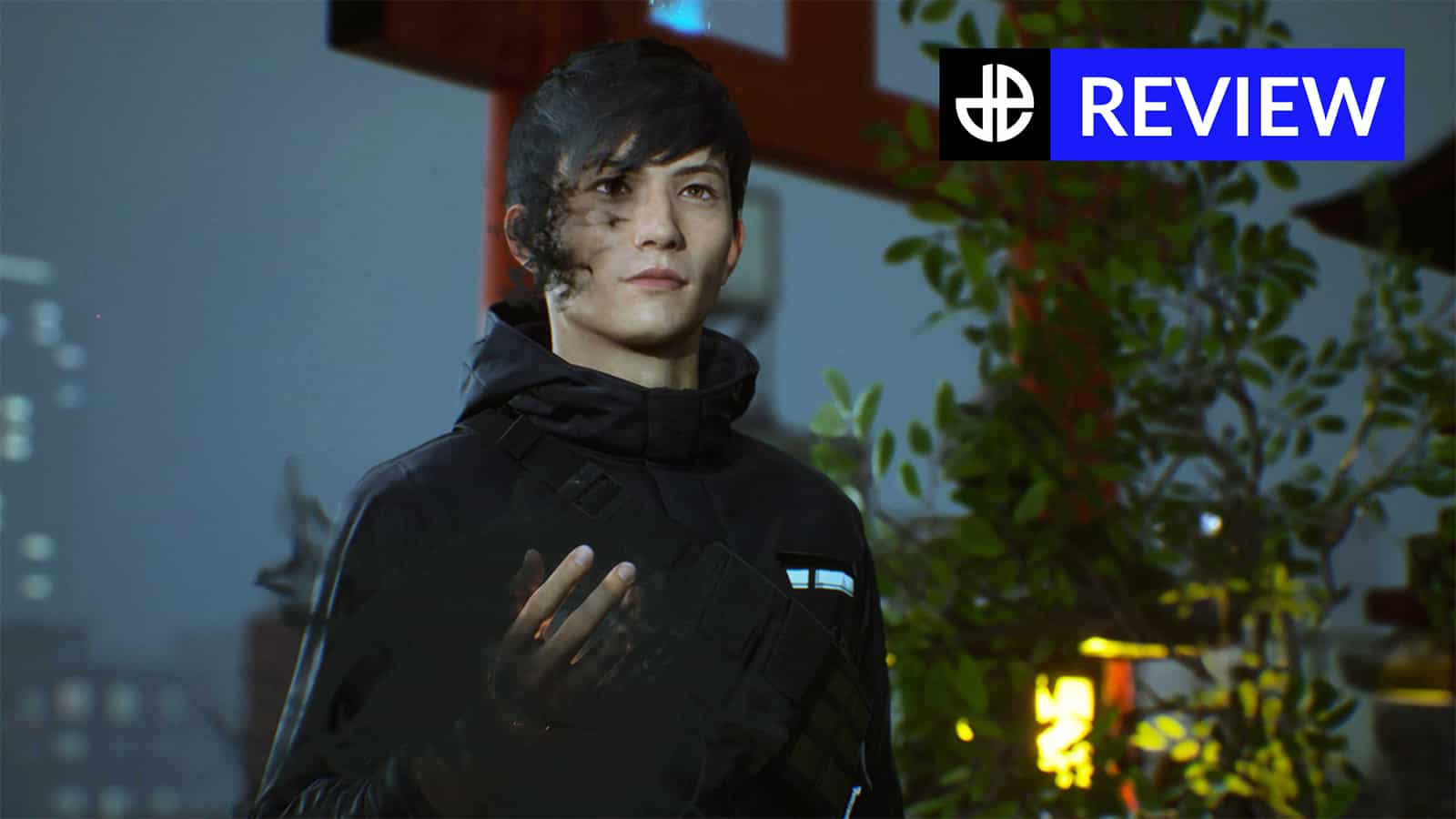 Tango Gameworks
Tango GameworksGhostwire Tokyo is an immersive adventure that brings the neon lights of the Japanese city to life with gorgeous visuals, hugely satisfying combat, and plenty of supernatural thrills.
It’s hard to say what genre Ghostwire Tokyo is – there’s exploring to be done in the gorgeous recreation of Tokyo, mysteries to solve involving supernatural beings, parkour over building rooftops, and first-person shooting when taking down ghostly enemies.
What we can say, though, is that it blends all of these different aspects together incredibly well, to create a game that has its own unique identity and stands as one of 2022’s most pleasant surprises.
Ghostwire Tokyo key details
- Price: $59.99 / £59.99
- Developer: Tango Gameworks
- Release Date: March 25, 2022
- Platforms: PS5 and PC
Ghostwire Tokyo trailer
The city is the true star of Ghostwire Tokyo
Ghostwire Tokyo opens with a car accident in the streets of Shibuya that’s left Akito, the game’s protagonist, dead. A mysterious fog has spread across Tokyo, causing everyone inside it to disappear, and swarms of creepy Visitors – led by an occultist in a Hannya mask who wants to cleanse the world – are stealing their spirits. To ward them off, a spirit known as KK takes over Akito’s body, temporarily bringing him back to the world of the living and imbuing him with special powers.
It’s an abrupt way to start a game, but an effective one, too, as being thrown straight into the action had me hooked right from the beginning. While the first chapter is essentially one long tutorial, it never feels tedious as the story unfolds in tandem. Akito wants to find his sister, while KK wants to stop whatever’s happening to Tokyo, and they’ll need to (reluctantly) work together to achieve their goals. It’s a nice pairing, with plenty of wisecracks and even some warmth as they get to know each other – although if I’m being honest, I never felt truly attached to any of the main characters in the game, which is a shame.
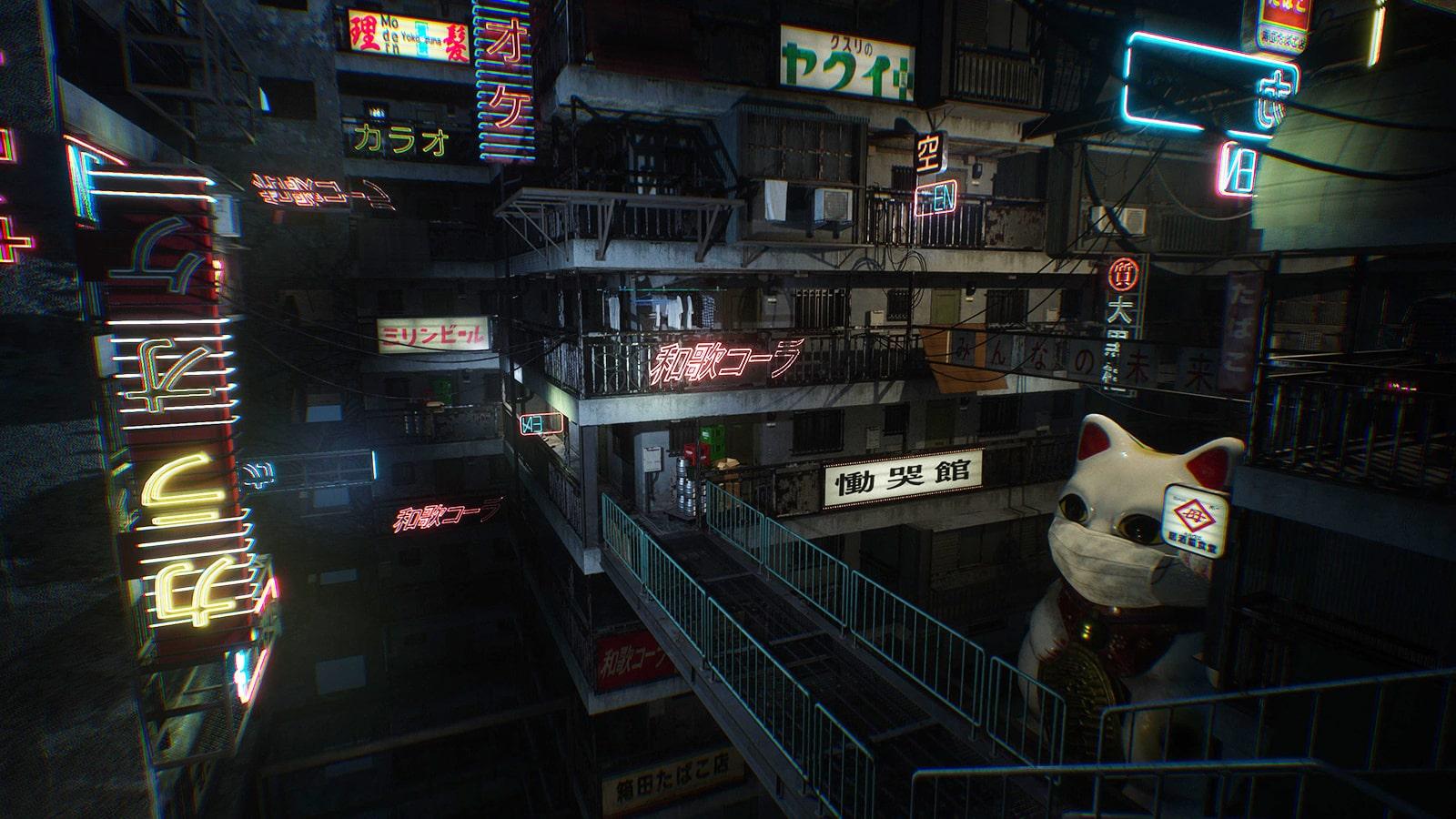 Tango Gameworks
Tango GameworksOnce you’ve made it through the first chapter, it’s out into the (mostly) open world of Tokyo. The usual mechanics apply here – visit shops to purchase items, gather XP to level up your powers, and complete side quests from friendly spirits along the way. All these familiar functions weave in elements of Japanese mythology and tradition that help make Ghostwire Tokyo feel unique, though; The shops are run by floating cats, interacting with Omikuji at Shrines can tell your fortune and grant buffs, and certain doors are locked with hand seals that require you to draw signs with the analog stick to open them. Most importantly, yes, you can pet the dog! There are canine friends roaming all over Tokyo, and they’ll even find buried treasure if you feed them – some of which are essential to the main story.
- Read More: Horizon Forbidden West review
The developers of Ghostwire Tokyo, Tango Gameworks, have referred to the game as more of a “sandbox” than an open world, which is true for the most part. The map isn’t unnecessarily huge, and most of it is blocked off from the start thanks to the fog that covers the city. As you progress through the game, you’ll discover torii gates that need to be cleansed to open up new areas of the map. It feels quite focused, with the fog effectively guiding you to your next objective in the early stages of the story, but there are still opportunities to go off-grid to explore, complete side quests, and save spirits with your Katashiro if you want to – and you probably will, as this is a prime method of earning XP and leveling up.
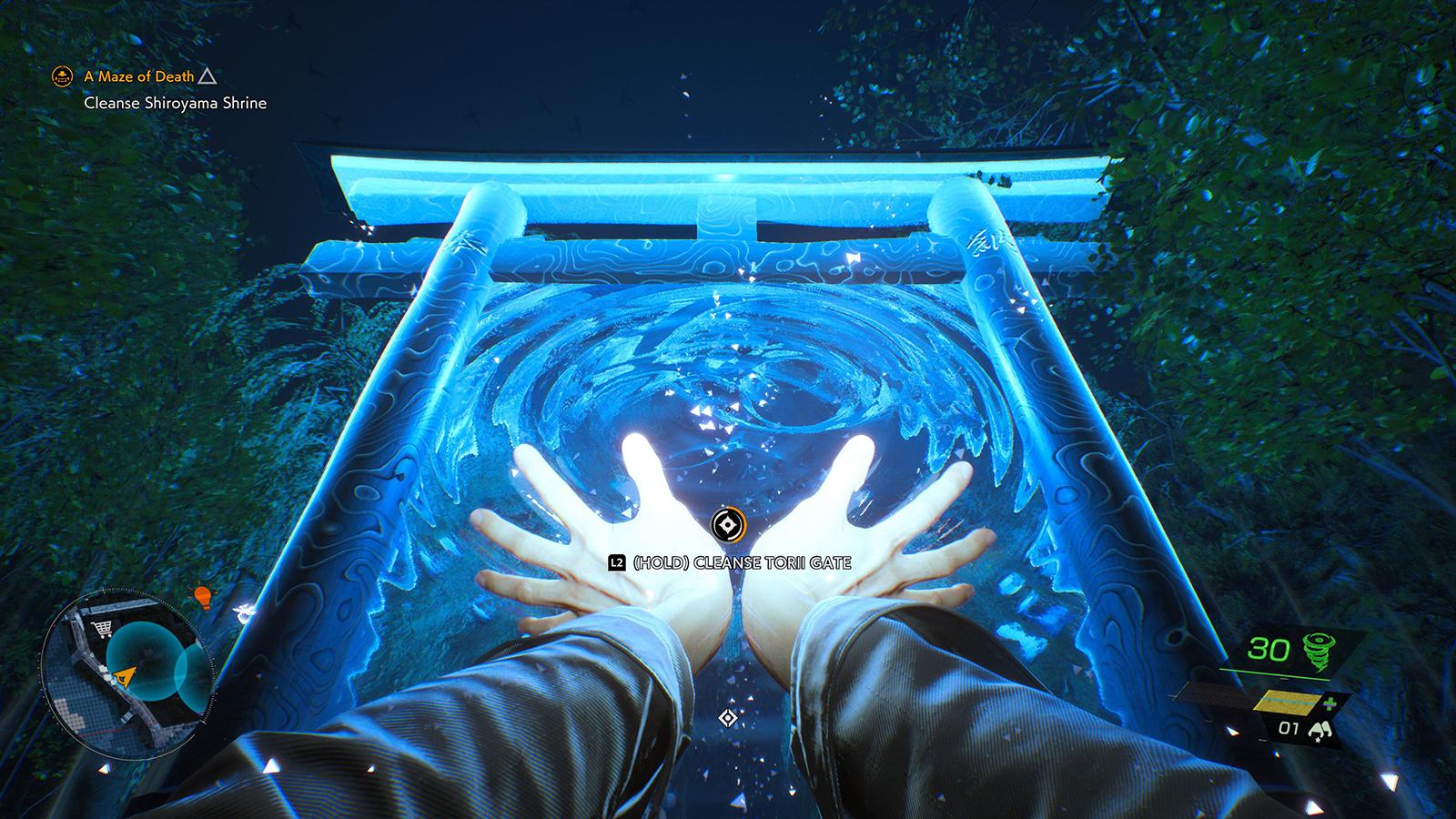 Bethesda Softworks
Bethesda SoftworksI love the prospect of an open world, but often find myself feeling lost in huge maps that lack a clear objective, so for me, this felt like a great balance. Tokyo looks amazing at night, too, with neon signs lining every path and reflections on the rain-soaked streets making the most of ray-tracing on the PS5. This is also a game that encourages vertical exploration, as there are loads of narrow buildings to plunder for secrets and rooftops to jump across with the help of a temporary glide ability and flying Tengu to grapple onto. It can feel claustrophobic at times – there are no gorgeous sunsets or vast views into the distance to enjoy – but that only adds to the spooky atmosphere.
Combat is flashy and a whole lot of fun
It’s not just the bright lights of the city that catch the eye. Showy combat gestures known as Ethereal Weaving – which are based on the elements Wind, Fire, and Water – are your main weapons in Ghostwire Tokyo, and they’re a constant, explosive spectacle. Tapping R2 releases small blasts of the element you have equipped, while holding R2 performs a powerful charge attack. Deal enough damage to a Visitor, and you’ll be able to rip out their core to stop them permanently. It’s a satisfying approach to combat that plays more like a first-person shooter, and the prospect of unlocking new elements and powering them up is genuinely exciting. Fire is the standout, dealing huge explosive damage from afar, but I never found myself using Water, as the requirement to be up close always seemed too dangerous with little payoff.
Later on in the game, when you reach maximum resonance with KK, you’ll be able to perform a Wire In, which is a bit like a super move that unleashes a devastating blast, restores your SP, and makes it easier to expose Visitor cores. You’ll also get access to various Talismans that can be thrown to distract enemies, stick them to the ground, or block their line of sight. What I loved about Ghostwire Tokyo’s combat is that you’re always learning new powers or gaining access to new items – it never gets boring.
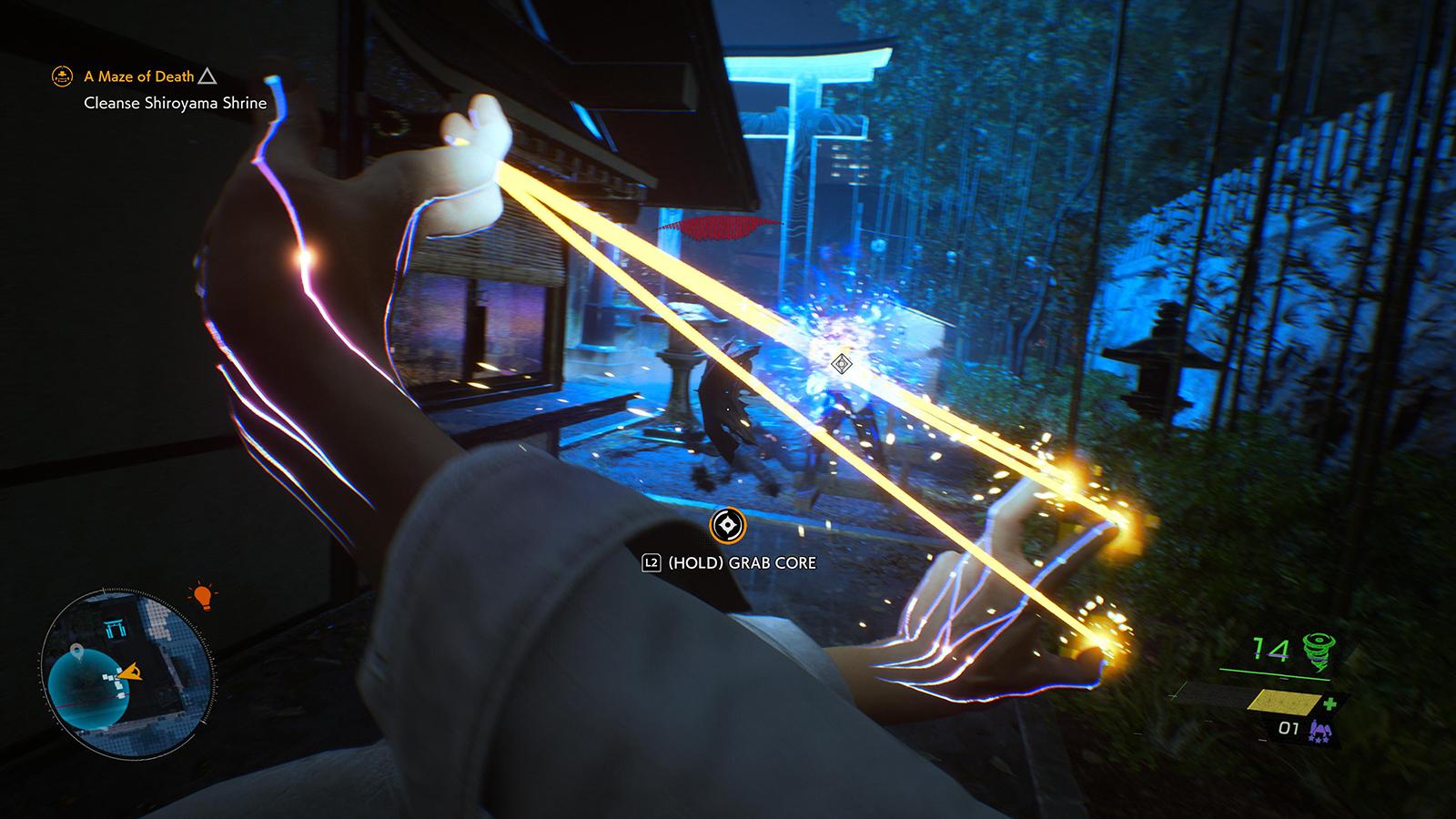 Bethesda Softworks
Bethesda SoftworksIn order to use Ethereal Weaving attacks, you’ll need to destroy crystallized ether floating around the map. Doing this will shatter the deposit and allow you to absorb the ether inside, restoring your SP to allow you to perform more attacks. This is one of the only combat features that I wasn’t keen on – quite a few times I found myself running out of powerful Fire and having to return to weak Wind, which isn’t anywhere near as effective (or as fun) against the game’s more powerful enemies, especially when you’re being swarmed. There’s also not really time to go looking for crystallized ether sources when you’ve got four headless ghost schoolgirls cartwheeling towards you.
- Read More: Elden Ring review
Another thing that took a while to get used to was the lack of a dodge maneuver. Visitors move quickly, and sometimes taking damage felt inevitable as a result of this. In fairness, Ghostwire Tokyo does put a lot of focus on the ‘block’ button, with KK often reminding you to use it when you take damage, and it does work well against individual enemies – but even hours into the game, I still found myself instinctively going to press a ‘dodge’ or ‘roll’ button in tricky situations, only to remember it wasn’t there. Admittedly, this might be more of a ‘me’ problem than a fault of the game, although I imagine many players will experience the same thing.
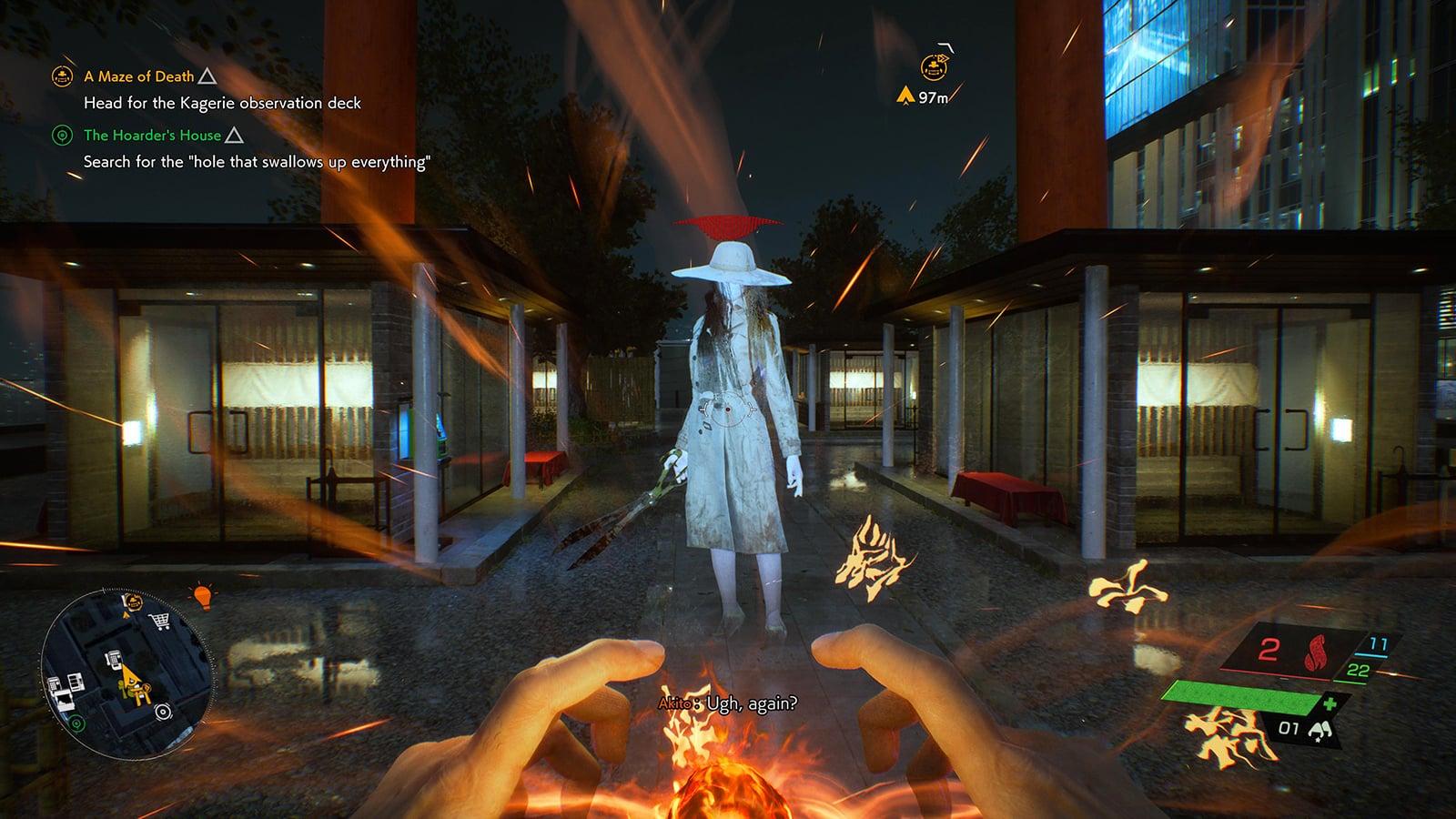 Tango Gameworks
Tango GameworksWhile playing around with Ethereal Weaving and blasting away Visitors is a lot of fun, I found that stealth was sometimes the best way forward. One section in the game’s second chapter required me to clear out Shiroyama Shrine so I could cleanse every torii gate and open up a new part of the map, but taking the brute force approach only got me killed after being swarmed by Visitors. On my next attempt, I eliminated them one by one with Quick Purges – the game’s supernatural version of a stealth takedown – which made things a lot easier, even if watching Visitors squirm up close to the camera is a little unnerving.
More thrills than chills
As someone who enjoys horror games but also struggles to keep their nerve, I was pleased to find out that Ghostwire Tokyo leans more towards action than horror. There are no jump scares, and it’s never particularly gory, although there are plenty of unsettling moments along the way. Visions of burning figures and the traditional ‘creepy person standing at the end of a hallway’ trope are out in full effect. Certain Visitors are also haunting to look at, especially in later chapters, and making your way through apartment blocks where the whole building appears to warp and twist around you can easily throw you off balance, although the game moves at such a quick pace that it’s hard to get truly scared by anything.
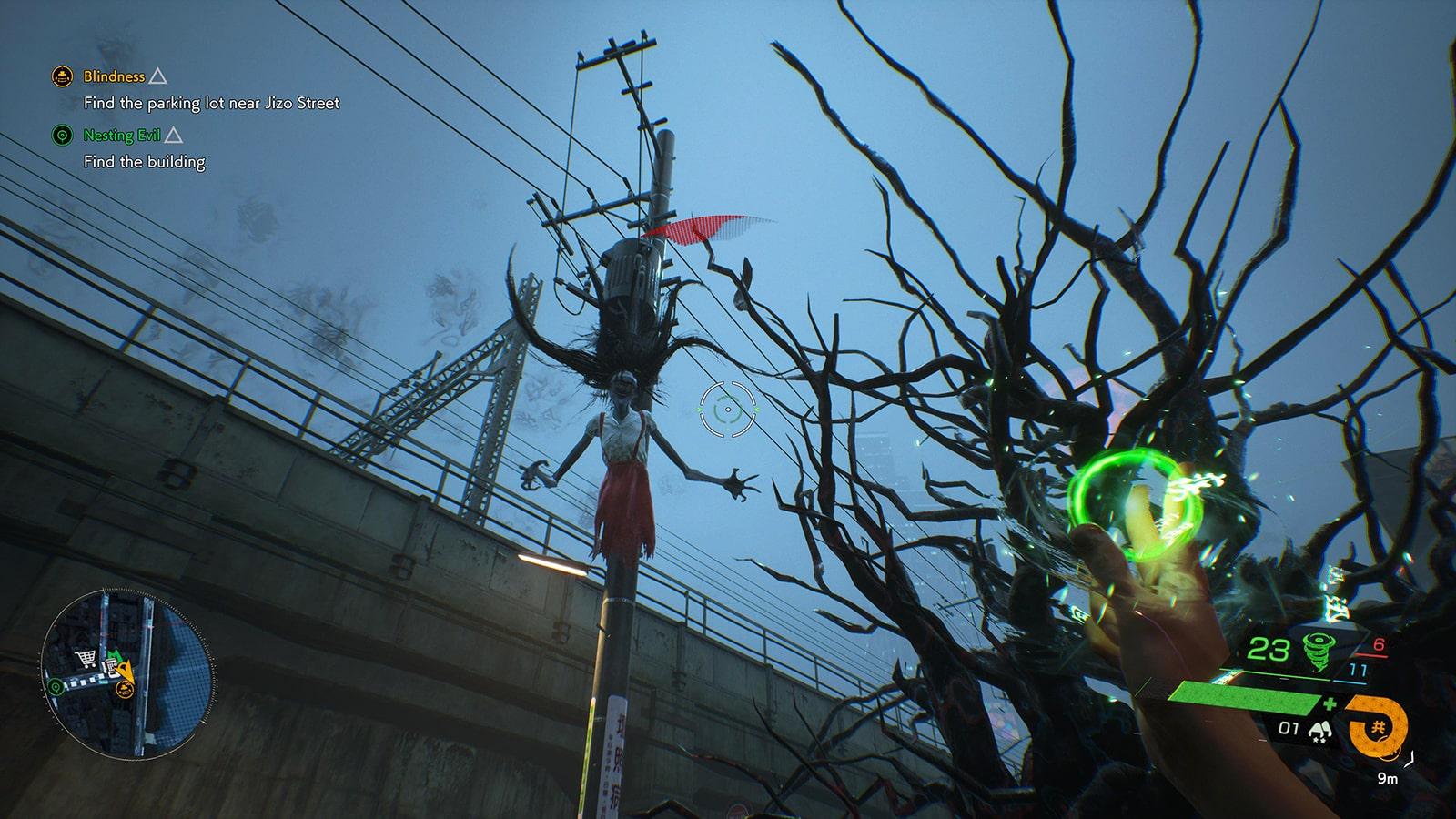 Tango Gameworks
Tango GameworksIn fact, without going too heavily into spoiler territory, the game’s scariest moments come when Akito temporarily loses his powers. Without Ethereal Weaving attacks or the ability to scout for enemies, the city that you’ve been blasting your way through becomes quite intimidating, as you’ll have to rely on stealth and Talismans that provide distractions to get to your next objective, giving it more of a horror-survival vibe. It’s only a short section, but in some ways, I actually enjoyed it more than the main chunk of gameplay.
While there’s plenty to do in Ghostwire Tokyo, and the combat is brilliant, there’s no denying that the city is the star here, with Tango Gameworks successfully blending a hyper-modern location with Japanese tradition and mythology to create a world that’s a delight to explore – or simply just look at. It’s worth playing for that alone.
Rating: 8.5/10
Ghostwire Tokyo is another great addition to the PS5’s growing library and we’d definitely recommend experiencing it. It’s not perfect, but there’s more than enough to keep you engrossed as the city slowly expands and offers more to explore.
Between a gallery of ghouls, exciting combat, and a stunning recreation of Tokyo to wander through, it stands alone as something unique. Plus, you can pet dogs – what more could you ask for?
Reviewed on PS5
